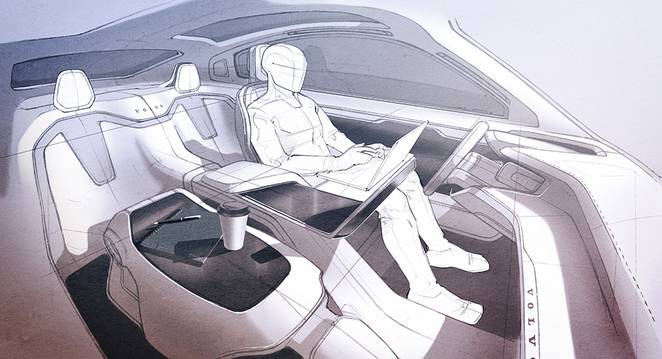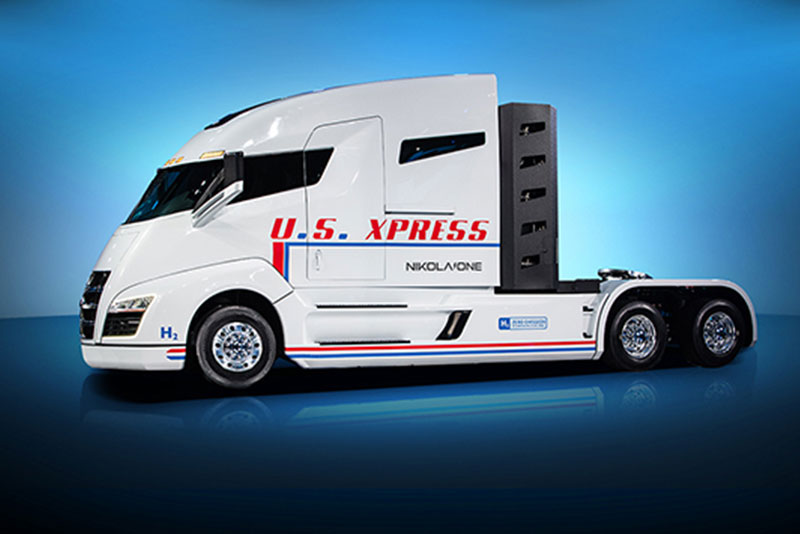

Believe it or not, our highways could be filled with autonomous trucks. And I’m not talking about 2 decades from now – this could be a reality in just a few years.
Imagine pulling up next to a big rig truck on the highway, looking through the window of the cab, and not seeing a driver. A scenario like that would be trippy to say the least. But, believe it or not, it’s a situation that could happen to you in the next 3 to 4 years. Advances in autonomous, or self-driving, technology for trucks are just around the corner.
Plans have already been laid out in the trucking industry for autonomous trucks to be incorporated into existing truck fleets. Much of the technology focuses on driver assistance and safety enhancement.

Truck.com recently reported on the issue. They interviewed Max Fuller, the Executive Chairman of U.S. Xpress, Inc., and he says, “We’re trying to enhance the safety, give [drivers] the ability to be more productive, try to create a better return for the company and supply a better service for our customers.”
The National Highway Traffic Safety Administration defines a Level 4 autonomous vehicle as one that can drive itself in most situations with some expectations including inclement weather where a human may need to take control. Many industry experts anticipate trucks to be at Level 4 autonomous capacity in the next few years.
Some people have a more cautious outlook, however. For instance, trucking
companies like Daimler Trucks North America are taking a more conservative approach. That’s because there are regulatory roadblocks, driving circumstances, and other irregularities that still need to be addressed.
Daimler’s Director of Advanced Engineering Derek Rotz tells Truck.com: “What happens if a steer tire blows out? Humans are very good at intuitively assessing a situation and responding. Computers need to have all that lined up for them, all those edge cases.” He goes on to mention that detecting road debris and correctly reading poor lane markings are still challenges for the technology.
Once trucks become automated what will happen to the drivers? This is an issue both company owners and workers are concerned about.
The shocking truth is it’s estimated that over the next ten years millions of drivers could lose their jobs to self-driving trucks. However, companies like Uber Advanced Technologies Group envision that their self-driving technology will be complementary to drivers. They think their autonomous trucks will not only retain jobs but also improve the livelihood and productivity of workers.
Also different companies are expected to implement different levels of automations, depending on the needs of their clients. Industry insiders insist that there’s no one solution for the complex trucking industry.
Uber Advanced Technologies and other companies are starting to publicly articulate their company vision. Most manufacturers say they are dedicated to creating exciting new technology that is dependable, economical, and safe.
For example, Volvo Group unveiled a few heavy-duty vehicles with self-driving technology. This includes driver-less tractors, self-steering garage trucks, and the world’s first automated mining truck.

Recently, Volvo introduced its 2018 VNL long-haul truck. It hadn’t redesigned this vehicle since 1996. The company made automated safety features like automatic emergency brakes a standard feature of the new model.
According the American Trucking Association, efficiency and safety are keys to new truck innovations. Unmanned vehicles are ideal for environments that are hazardous to human life. That makes them beneficial for both workers and businesses.
Currently, the industry is in flux, however. Federal and state regulators haven’t issued guidance about how companies should responsibly adoption this rapidly developing technology. Meanwhile, the trucking industry anxiously waits. Companies don’t know what new requirement might come out.
Whatever guidelines are handed down in the future it’s important for manufacturers to be flexible. That’s why they are creating company standards that allow for these new innovations to blossom and find their niche. This will help brands launch new trucks in the most effective way.
Max Fuller from U.S. Xpress says: “We’ll continue to adopt a lot of these new technologies. Our number one goal is to create jobs that people want and that’s the reason we need products that make the job a lot simpler for drivers.”
He goes on to state, that as the motor carriers purchase new technologies they’re looking carefully at their RIO. They’re looking for payback in eighteen to twenty four months. That’s because trucks are traded in before they get to 500,000 miles, which is 3 to 4 years.
If the technology keeps evolving and if there are no federal or state guideline hurdles, the trucks that are purchased today will eventually be replaced by vehicles with computers that do much more of the driving.
So, in the near future if you pull up next to a big rig, look through the window, and don’t see a driver, don’t be surprise.
